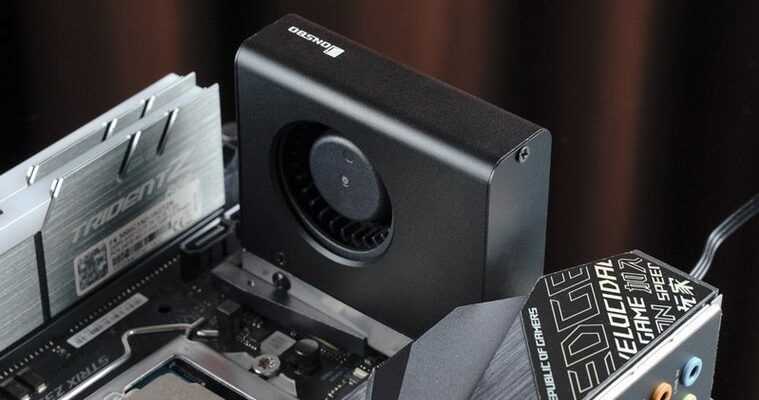Generation after generation, SSD
NVMe in M.2 format are faster and faster, but they also heat up more and more.
The arrival of solid-state drive (or SSD) has been a real revolution in our personal computers. They accelerated the loading of the operating system considerably and seemed to have no real flaws… apart from their cost.
Increasingly high performance …
If the first SSDs took the appearance of 2.5-inch hard drives connected in SATA, the industry quickly turned to an even more compact system, the M.2 format. It also quickly adopted the NVMe protocol capable of even more impressive speeds.
We first talked about exceeding GB / s, then reaching 3 GB / s, 5 GB / s and even 7 GB / s with the very latest generation of PCI Express 4.0 SSD such as Western Digital WD_Black NS850, the fastest model in our hands.
Many users rightly believe that such speeds are unnecessary for “classic” use, and it is indeed very difficult to detect a difference between the PCIe 3.0 models and the PCIe 4.0, for example. Finally, not quite: the warm-up differs more than noticeably!
… but a risk of throttling always bigger
A PCIe 4.0 SSD must be accompanied by a heat sink to dissipate this heat which would otherwise cause a cooling effect. throttling. The SSD reduces its flow to keep heating below 70 ° C. We then lose all the benefit, already barely noticeable, of the transition to PCIe 4.0.
With Alder Lake, Intel has started the generalization of PCIe 5.0, and various SSD manufacturers have already announced the upcoming arrival of SSD to this standard. Thus, ADATA presented two prototypes that will be shown at CES 2022, and Samsung has done the same with its PM1743.
The South Korean mainly targets its product for companies, and the format adopted could change a lot of things. On the other hand, at ADATA, the PCIe 5.0 SSDs presented are in the classic M.2 format, and the issue of heat dissipation arises with greater force.
PCIe 5.0 SSDs will be even hotter
Several observers have wondered if the heatsinks supplied with the motherboards will be sufficient, and this is undoubtedly what prompted the Chinese Josbo to unveil a new cooling system aimed specifically at NVMe SSDs in M.2 format, preferably in PCIe 5.0.
The accessory measures 76 x 24.5 mm for a height of 70.5 mm which therefore has nothing to do with current models. It has an aluminum heatsink with a pad thermal. Finally, the heatsink is surmounted by a type fan. blower capable of rotating at 3000 rpm for an air volume of 4.81 CFM. The noise would be a maximum of 27.3 dBA.
Josbo announces its product just a few days after ElecGear’s much more cumbersome heatsink model. There is of course work to be done to optimize this, but it seems certain that the release of PCIe 5.0 SSDs will significantly increase the size of the heatsinks … and, in fact, reduce the interest of these M.2 solutions known for their compactness.
Source: WCCFTech

28